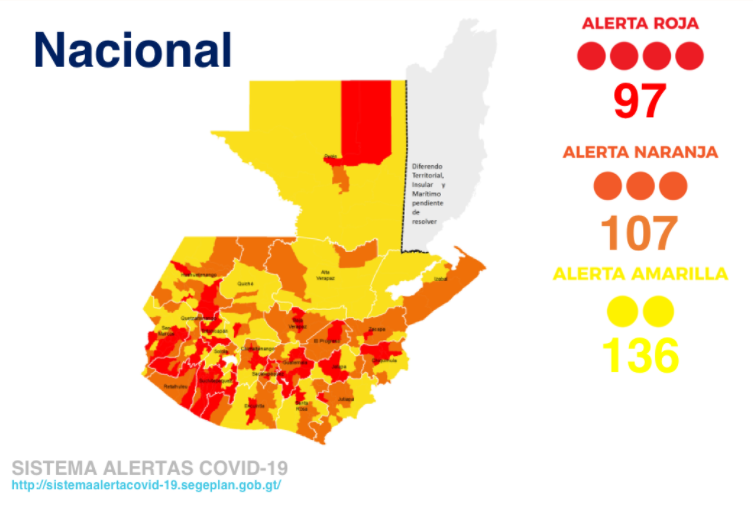| by Mark Ely As I write this, Guatemala is still experiencing very high rates of COVID-19 infection. The state of Quiche, where our work takes place, is currently in Orange alert status. The capital, Santa Cruz del Quiche, has spent a lot of time in the Red status, the highest. The CDC rates incidence of infection in Guatemala at the highest level, “Level 4: Very High”. This is probably due to reduction of virus mitigation measures over the last few months. |
The Guatemalan government’s mandatory curfew was lifted on September 30. There are no restrictions on intercity or interstate travel. The Government of Guatemala announced January 25 the following changes to the operating hours of commercial establishments;
- Public markets may operate from 5AM to 5PM daily
- Retail establishments, including shopping malls, stores and supermarkets may operate until 7PM daily
- Bars, restaurants and night clubs may operate until 9PM daily
Impact on Education
This is the only area in Guatemala still significantly affected by restrictions. In Red alert status, in-person schooling is not permitted. Until recently, students from rural communities at the Orange level attended in-person classes twice a week. That changed when the government decided that that should not be allowed at the Orange level either. So remote learning will continue for most institutions in 2021 as long as high infection rates persist.
The Government of Guatemala received its first delivery of vaccine doses in February. Priority will be given to healthcare workers, first responders, and vulnerable populations. Volunteer firemen/paramedics and health care workers are currently being vaccinated.
Guatemala is receiving vaccines through COVID-19 Vaccines Global Access (COVAX), a global platform to support the development, manufacturing, and distribution of COVID-19 vaccines. It was launched in April 2020 by the World Health Organization (WHO). COVAX seeks to solve the problem of the unequal global distribution of vaccines.
81,600 doses of AstraZeneca vaccine are the first of a total of 6.6 million doses that Guatemala expects to receive this year through COVAX, to reach its goal of immunizing 20% of the population.
On May 4, the country began Phase 2 vaccinations, which include individuals in the 65+ age range. They are hoping to open that to 60+ soon.
When can our groups safely return to Guatemala?
Unlike many countries at the moment, the only entry requirements for Guatemala is a negative COVID-19 test within a certain timeframe. So the bar is low, and just about anyone can go to Guatemala right now if they want to. But the question is, should we?
The Guatemalan government appears to have pretty much given up on any sort of pandemic mitigation effort. In our opinion, that puts the responsibility squarely on visitors -- i.e., is traveling down there right now worth the risk of transmitting the virus to people that have become like family to us? The population we work with is especially vulnerable due to poor health and nutrition, basic living conditions, and almost nonexistent healthcare. It doesn't seem worth the risk, especially since we're currently getting our work done without putting people at risk.
Travel, especially international travel, was a key mechanism responsible for the rapid global spread of this virus. Our current thinking is that a bare minimum requirement for a team to return to Guatemala is that everyone be fully vaccinated at least a month prior to departure. There are still a lot of question marks.



 RSS Feed
RSS Feed